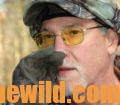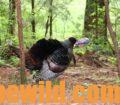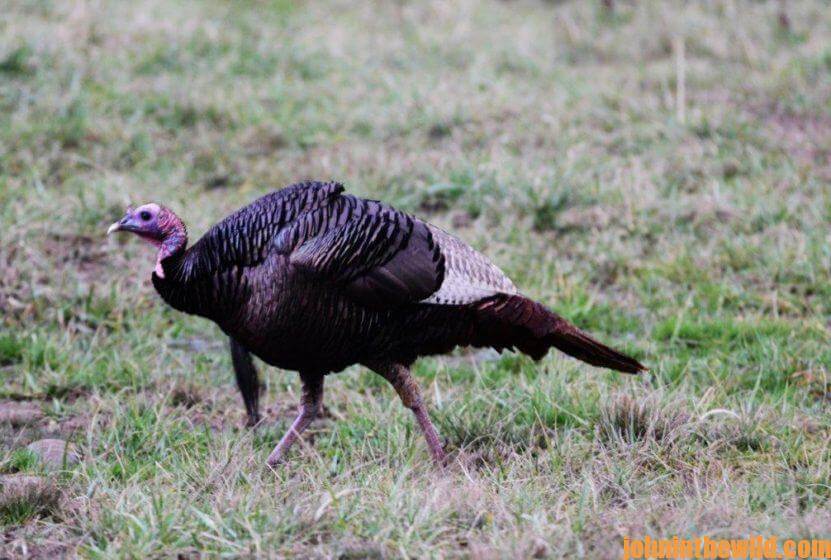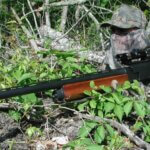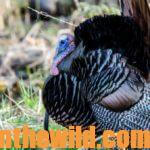Editor’s Note: With turkey-hunting season starting March 6, 2021, in Florida, March 15 in Mississippi, and March 20, 2021 in other southern states and continuing in South Carolina until May 10, Texas until May 16, and many northern states like New York and Minnesota and western states such as Washington, Wyoming and South Dakota until May 31, 2021, you need to get ready for turkey season now. The key to taking a gobbler is not your calling ability, your camo, the power of your shotgun or the number of turkeys on the property. To bag the toughest toms, you must know what a turkey is planning to do before he does it. One of the greatest turkey hunters who ever lived was “Uncle Roy” Moorer of Evergreen, Alabama. When I met Uncle Roy many years ago before he passed away, he gave me the secret to bagging even the toughest of toms. “All you’ve got to do to take any turkey, no matter how tough he is to hunt, is know where that turkey wants to go, get there before he does and let him come to you.” Uncle Roy’s nephew told me, “The reason Uncle Roy has been able to bag over 500 turkeys in his lifetime was because he always knew what a turkey would do even before the bird knew.” To take tough toms, you’ve got to understand the mind of the turkey.
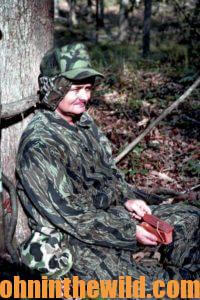 Allen Jenkins:
Allen Jenkins:
A true turkey hunt is when you’re hunting a turkey that doesn’t talk. These lock-jawed gobblers are the specialty of avid turkey hunter Allen Jenkins of Thomasville, Georgia, formerly the owner of M.L. Lynch Calls. (Visit his Facebook page at https://www.facebook.com/Allen-Jenkins-Turkey-Calls-167030920455412/.)
“I like to hunt turkeys that talk very little and walk a lot,” Jenkins explains. “These birds are at least four years old and usually have built up a reputation as being impossible to kill. To take this tom, you’ve got to know him better than your best friend. “You’ve got to know where this lock-jawed gobbler is traveling and when he’s traveling there. Before, I’ve even plowed the edges of fields, scraped woods roads with a bulldozer and cleared paths through thickets. Then when one of these toms that won’t gobble walks through an area, I can see his track.
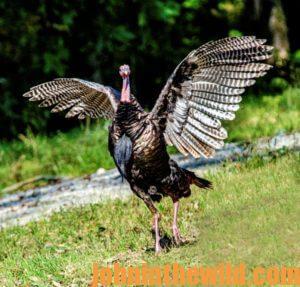 “Once I know where a tight-lipped gobbler is roosting, often I’ll go before daylight, cluck to him once or twice and not call again until I either see the bird or leave the woods. I may hunt him in the middle of the day, or I may hunt him late in the afternoon when no one else is hunting him. But the keys to bagging a bird like this will be patience, dedication, knowing where and when the turkey moves and doing very little calling. Lock-jawed gobblers will teach you how to hunt turkeys. They know much more than you do about the woods and hunters, or else they wouldn’t have been able to survive for at least four years. Often I become so fond of these turkeys that given the opportunity to take them, I won’t.”
“Once I know where a tight-lipped gobbler is roosting, often I’ll go before daylight, cluck to him once or twice and not call again until I either see the bird or leave the woods. I may hunt him in the middle of the day, or I may hunt him late in the afternoon when no one else is hunting him. But the keys to bagging a bird like this will be patience, dedication, knowing where and when the turkey moves and doing very little calling. Lock-jawed gobblers will teach you how to hunt turkeys. They know much more than you do about the woods and hunters, or else they wouldn’t have been able to survive for at least four years. Often I become so fond of these turkeys that given the opportunity to take them, I won’t.”
David Hale:
David Hale of Knight and Hale Game Calls in Cadiz, Kentucky, reports that, “If a crook comes into your house and you know he’s in the house, you’ll go out the back door to keep from getting hurt or to get help. Then once the crook leaves the house, you’ll return. Turkeys do the same thing. If there’s too much calling pressure or hunting pressure, the turkeys will leave their homes (roost areas) and move to another region where they can see hunters coming. Turkey gobblers have certain regions where they strut, drum and are visible to hens without ever actually having to gobble. This same type of place is where a turkey can see a hunter approach. Often these strut zones are on hills or ridges where a tom can see all the way down the ridge and on either side of the hill. These strutting areas are the best spots to take a gobbler that is feeling a lot of hunting pressure because the turkey feels secure in these areas and can see the hens as they approach.
“One of the sites where I like to hunt these kinds of turkeys is where I can find two high points of land on a ridge with a saddle in the middle. Often a turkey will strut and drum on one high spot, walk down through the saddle and strut and drum on the other high point. If I take a stand in a saddle, I’ll get a shot at the gobbler – either going or coming. Even if a turkey doesn’t gobble in the morning, he’ll move to that strut zone and call his hens using strutting and drumming to let the hens know where he is. Many hunters don’t understand a turkey doesn’t have to gobble to get hens to come to him.
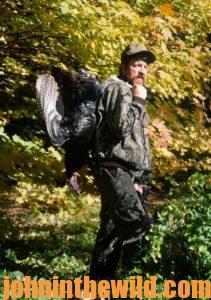 “When a hen is ready to be bred, she’ll move close to that strut zone, especially when hunting pressure is intense, listening for the tom to drum and strut. When I get to the strut zone, I only call about one-tenth as much as I will in an area where the turkeys haven’t been pressured. I’ll usually cluck once or twice, perhaps give three soft yelps and then wait a full 10 minutes before I call again. I’ve watched gobblers in high-pressure regions and am convinced that the least amount of calling I can do to let the turkey know where I am, the more interested the bird becomes in finding me. A gobbler will come forward two or three steps, strut and drum and keep looking for the hen. When he doesn’t see her, he’ll walk two or three steps and strut and drum once more. He’s trying to get close enough to see her or let her spot him without actually having to commit himself to going to her. The key to taking this gobbler that is being pressured is to be patient. Don’t rush the turkey into coming toward you.
“When a hen is ready to be bred, she’ll move close to that strut zone, especially when hunting pressure is intense, listening for the tom to drum and strut. When I get to the strut zone, I only call about one-tenth as much as I will in an area where the turkeys haven’t been pressured. I’ll usually cluck once or twice, perhaps give three soft yelps and then wait a full 10 minutes before I call again. I’ve watched gobblers in high-pressure regions and am convinced that the least amount of calling I can do to let the turkey know where I am, the more interested the bird becomes in finding me. A gobbler will come forward two or three steps, strut and drum and keep looking for the hen. When he doesn’t see her, he’ll walk two or three steps and strut and drum once more. He’s trying to get close enough to see her or let her spot him without actually having to commit himself to going to her. The key to taking this gobbler that is being pressured is to be patient. Don’t rush the turkey into coming toward you.
“Most of the time when this tom finally does move to within gun range, you won’t hear him. He’ll sneak in to where you are and see you before you spot him. Remember, the turkey is dodging the hunter to survive. That bird will be as cautious as he can in hopes of seeing you first. The more you can become accustomed to seeing a blinking eye or the least movement of white and define a turkey sound, the more likely you are to see this bird before he spots you. Turkeys don’t leave an area when hunting pressure builds, and they become silent. They have nowhere else to go. You still can kill plenty of turkeys with a large number of hunters in the woods, if you’ll pinpoint the toms’ strut zones and hunt them.”
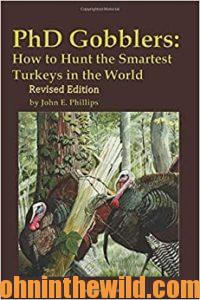 To learn more about turkey hunting, check out John E. Phillips’s latest Audible book, “PhD Gobblers: How to Hunt the Smartest Turkeys in the World, Revised Edition” at https://www.amazon.com/PhD-Gobblers-Smartest-Turkeys-World-ebook/dp/B083V83RLG, and available in Kindle, print and Audible. You may have to cut and paste this link into your browser. (When you click on this book, notice on the left where Amazon says you can read 10% of this book for free and hear 10% for free). To learn about other turkey books by John E. Phillips, go to www.amazon.com/author/johnephillips.
To learn more about turkey hunting, check out John E. Phillips’s latest Audible book, “PhD Gobblers: How to Hunt the Smartest Turkeys in the World, Revised Edition” at https://www.amazon.com/PhD-Gobblers-Smartest-Turkeys-World-ebook/dp/B083V83RLG, and available in Kindle, print and Audible. You may have to cut and paste this link into your browser. (When you click on this book, notice on the left where Amazon says you can read 10% of this book for free and hear 10% for free). To learn about other turkey books by John E. Phillips, go to www.amazon.com/author/johnephillips.
Tomorrow: Turkeys That Walk and Talk with Terry Rohm

